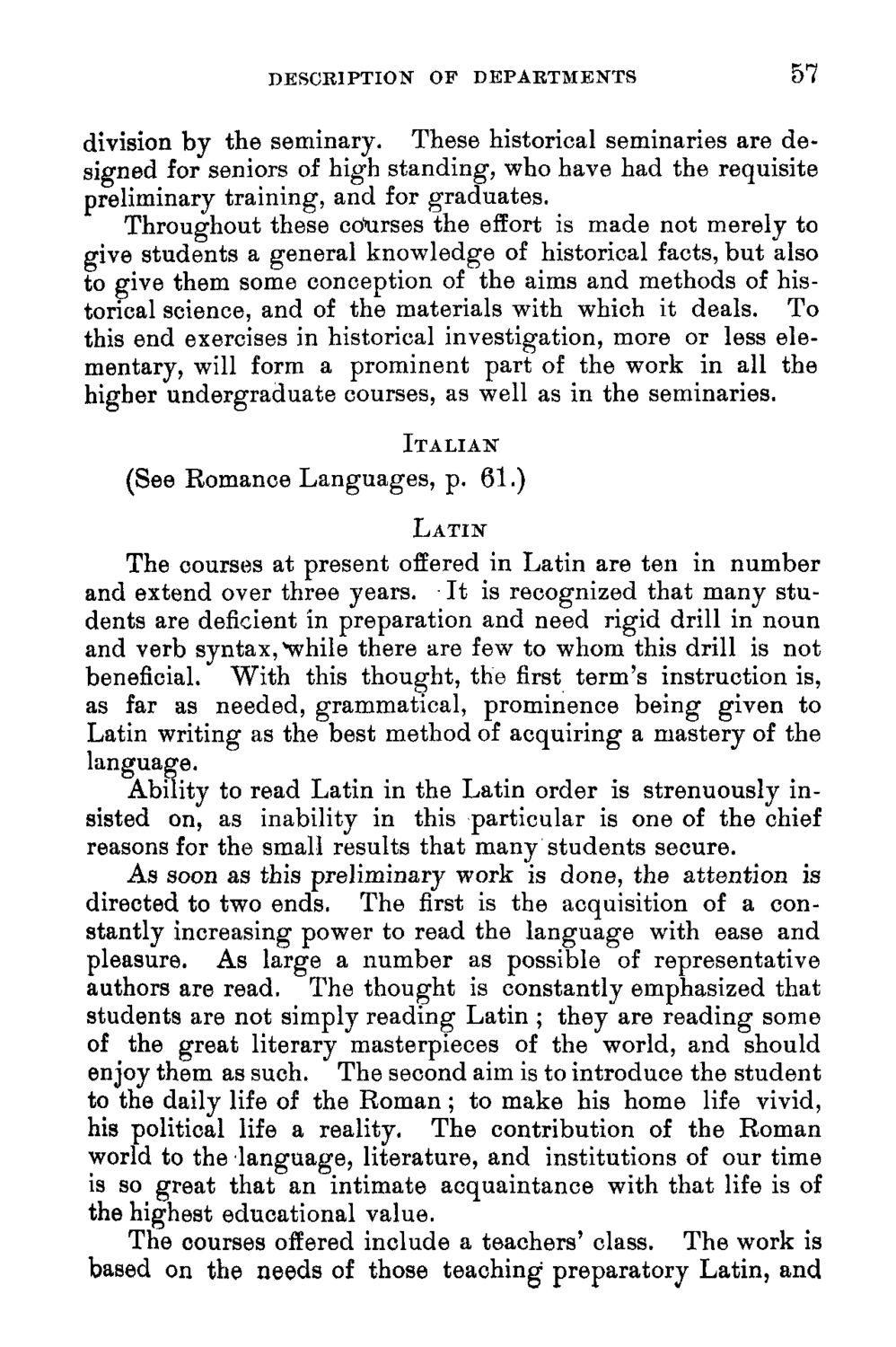| |
| |
Caption: Course Catalog - 1895-1896
This is a reduced-resolution page image for fast online browsing.

EXTRACTED TEXT FROM PAGE:
DESCRIPTION OP DEPARTMENTS 57 division by the seminary. These historical seminaries are designed for seniors of high standing, who have had the requisite preliminary training, and for graduates. Throughout these courses the effort is made not merely to give students a general knowledge of historical facts, but also to give them some conception of the aims and methods of historical science, and of the materials with which it deals. To this end exercises in historical investigation, more or less elementary, will form a prominent part of the work in all the higher undergraduate courses, as well as in the seminaries. ITALIAN (See Romance Languages, p. 61.) LATIN The courses at present offered in Latin are ten in number and extend over three years. It is recognized that many students are deficient in preparation and need rigid drill in noun and verb syntax, Nvhile there are few to whom this drill is not beneficial. With this thought, the first term's instruction is, as far as needed, grammatical, prominence being given to Latin writing as the best method of acquiring a mastery of the language. Ability to read Latin in the Latin order is strenuously insisted on, as inability in this particular is one of the chief reasons for the small results that many students secure. As soon as this preliminary work is done, the attention is directed to two ends. The first is the acquisition of a constantly increasing power to read the language with ease and pleasure. As large a number as possible of representative authors are read. The thought is constantly emphasized that students are not simply reading Latin ; they are reading some of the great literary masterpieces of the world, and should enjoy them as such. The second aim is to introduce the student to the daily life of the Roman; to make his home life vivid, his political life a reality. The contribution of the Roman world to the language, literature, and institutions of our time is so great that an intimate acquaintance with that life is of the highest educational value. The courses offered include a teachers' class. The work is based on the needs of those teaching preparatory Latin, and
| |